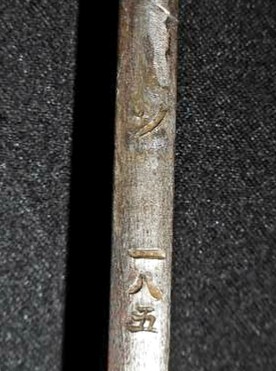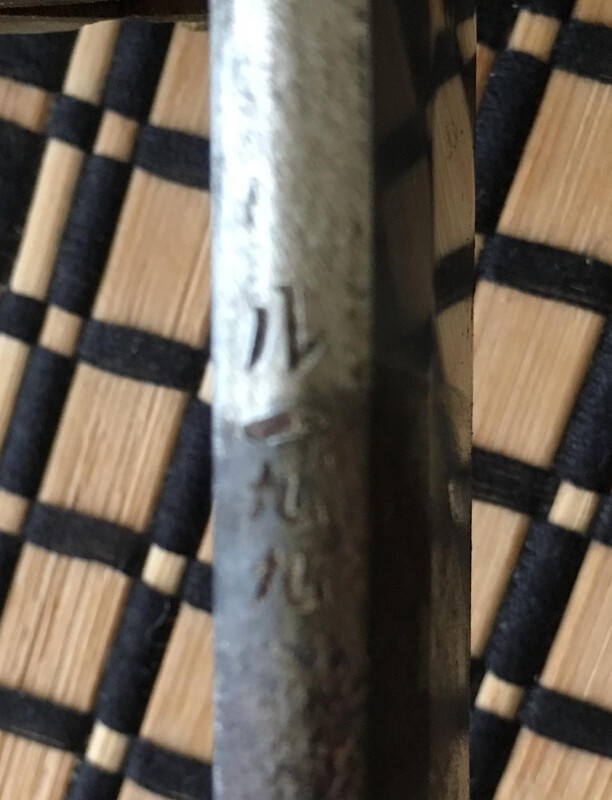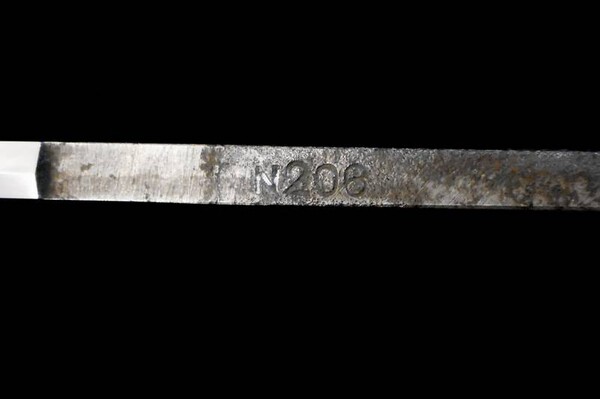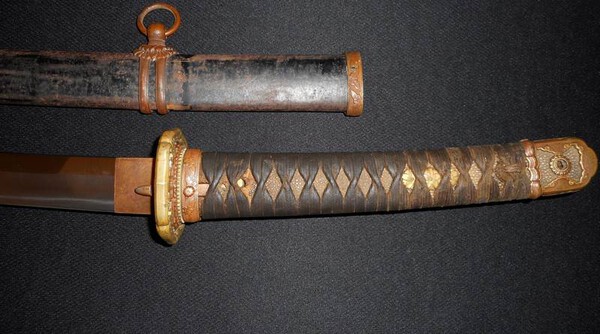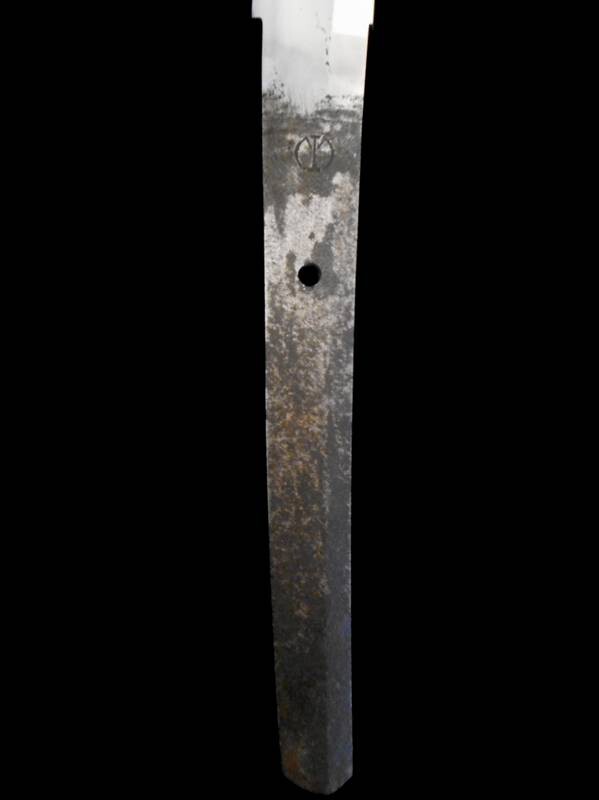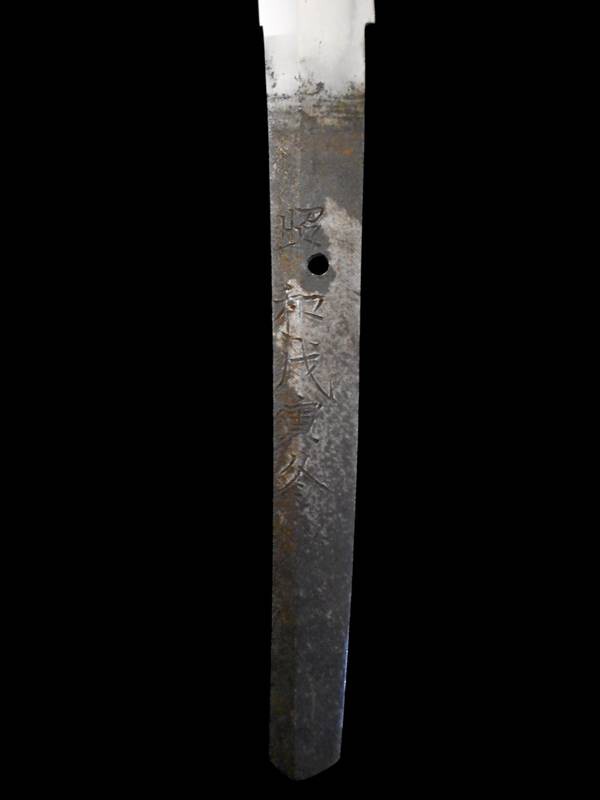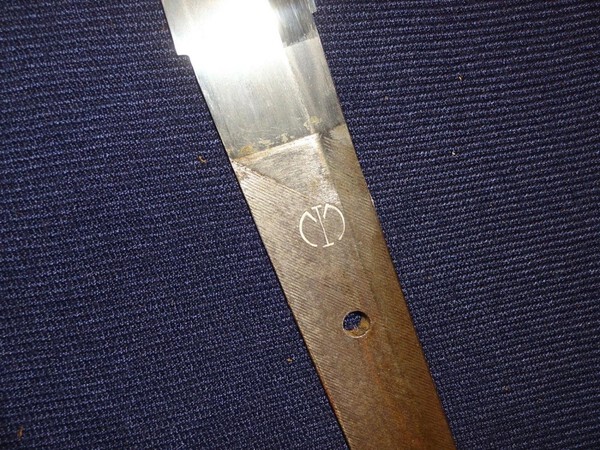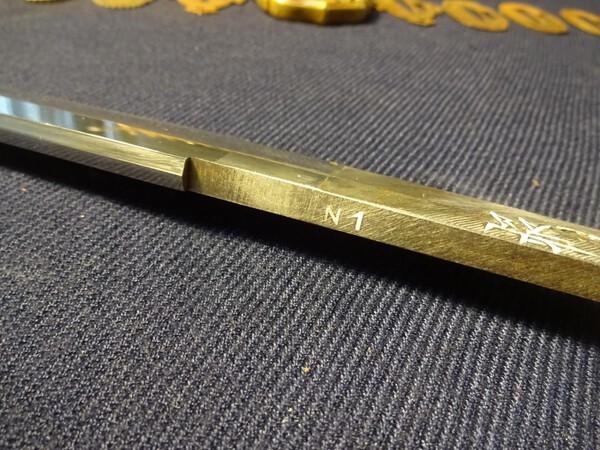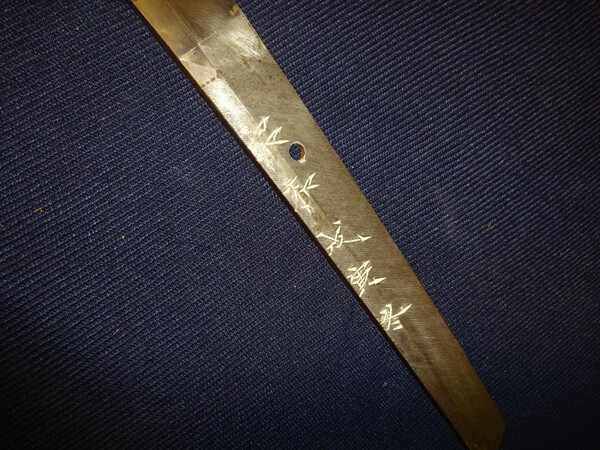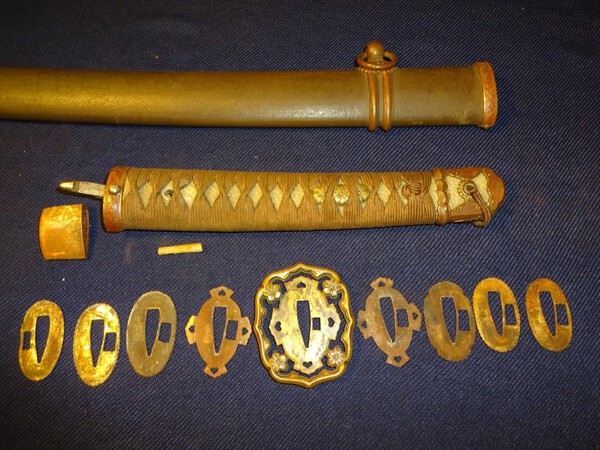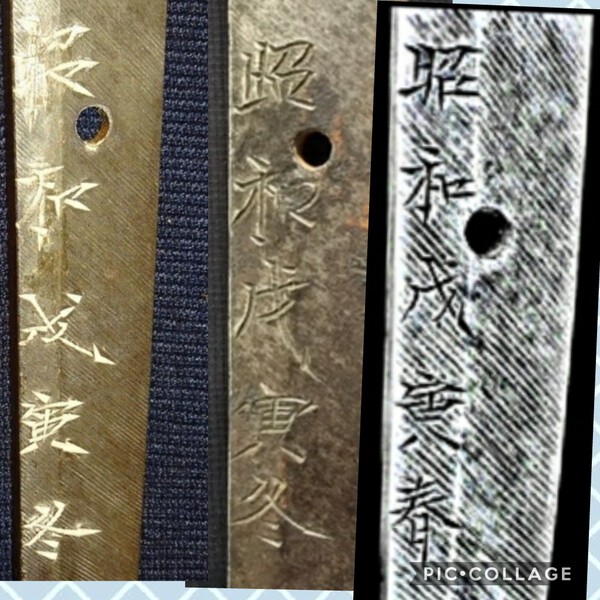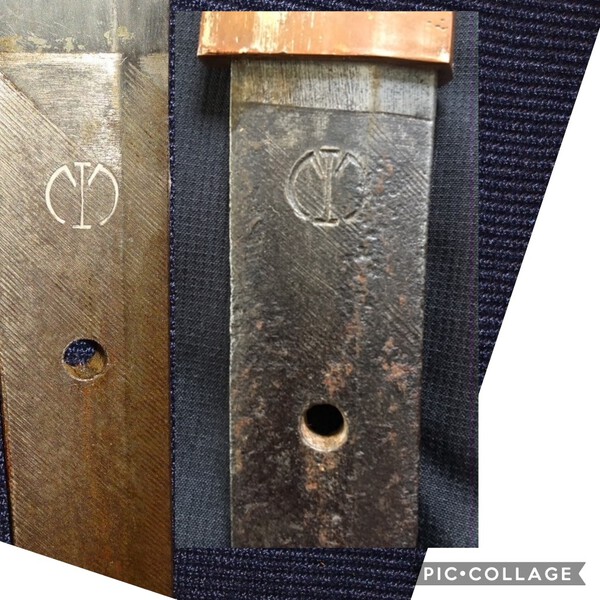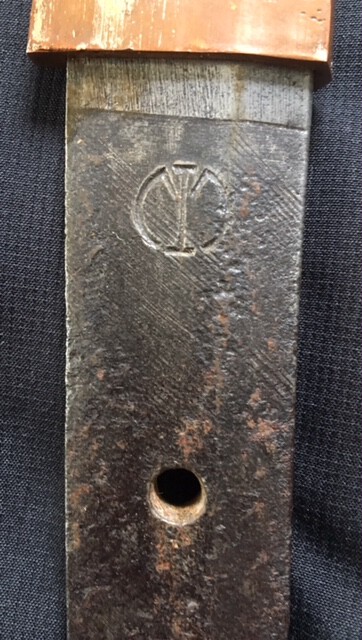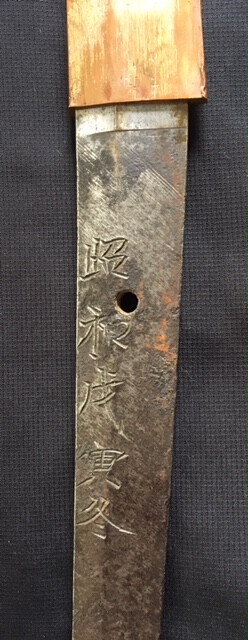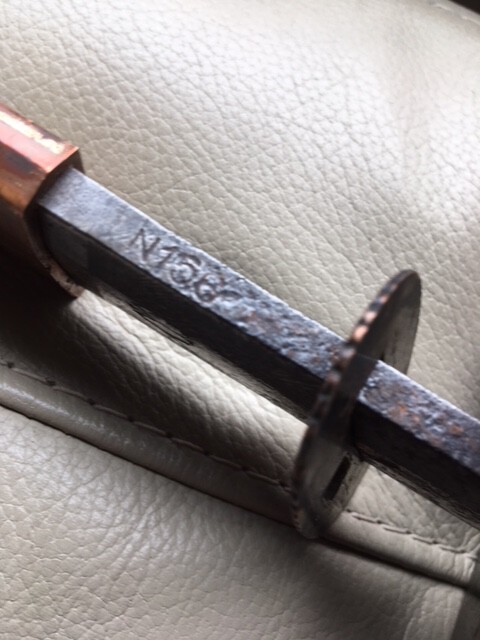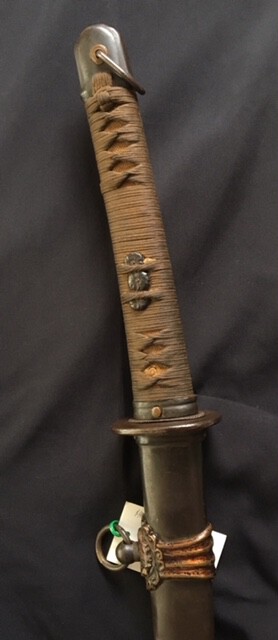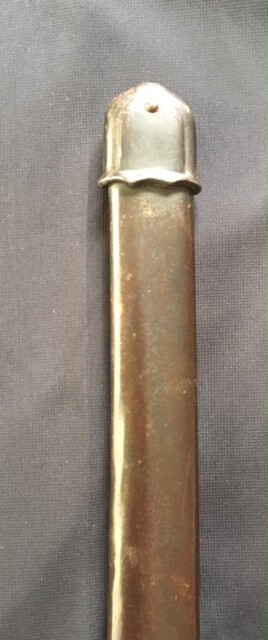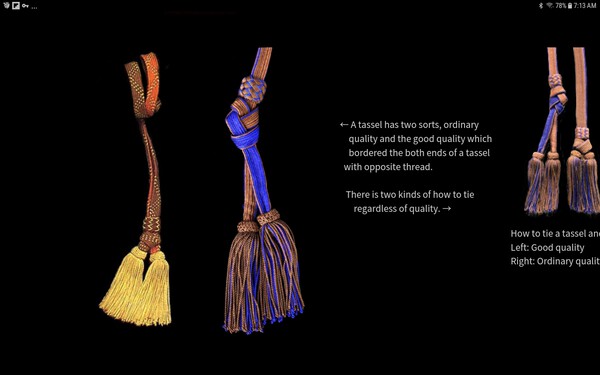-
Posts
13,701 -
Joined
-
Last visited
-
Days Won
167
Content Type
Profiles
Forums
Events
Store
Downloads
Gallery
Everything posted by Bruce Pennington
-

What Do You Think Of This Nco Sword
Bruce Pennington replied to Kmad's topic in Military Swords of Japan
A bad fake. Good on ya for checking it out first. -
Dave, I've seen this with IJA gunto, but have never owned a Kai with the fabric sarute. Are they anchored inside the same way? If so, I agree with all the above comments. This long one is knotted. I doubt the factory assembly would have knotted a sarute like that.
-
Steve, These normally sell in the $250-400 USD range. Yours being on the rare side could be at the higher end, or a tad more, so I don't see that an appraisal would be worth the money. Some of these can have family blades in them, and IF the blade is by a famous smith, then the ante goes up. But you'd have to dissasemble it to find that out, assuming the look of the blade makes you think it's a crafted blade as opposed to a factory blade.
-
Dawson adds that after 1934, when Manchukuo was proclaimed the Empire of Manchukuo, the created a Natioinal Army. Swords with the crossed flags were swords of the Manchukua Imperial Army.
-

Translation Help With Grass Writing Mei Please
Bruce Pennington replied to matthewbrice's topic in Translation Assistance
I see "spring"! and I think "1940 (2600). -
Thanks guys! I'm voting "so" also. My biggest doubt was the thickness of the stroke. It almost looked like it was a "Ku" with the parallel lines too close together.
-
-
Thanks Steve. That actually DID help!
-
Oye vey! It's getting worse! Ha! You just mentioned "Zou", which the Mantetsu collectors have been calling "Tanzo". Showa 14 (1939) to Showa 16 (1941) : 興亜一心 (Koa-Isshin) 満鉄作之 (Mantetsu Saku Kore) Showa 17 (1942) : 興亜一心 (Koa-Isshin) 満鉄謹作 (Mantetsu Kin-Saku) Showa 17 (1942) to Showa 18 (1943) : 興亜一心 (Koa-Isshin) 満鉄作 (Mantetsu Saku) Showa 18 (1943) to Showa 19 (1944) : 満鉄鍛造之 (Mantetsu Tanzo Kore) Maybe I should have stuck with "Ignorance is bliss"!!!
-
That's a fabulous job Chris! I keep most of mine in original condition, but I've had to strip a couple (gold and black "Bubba" paint) and repaint one. Very rewarding feeling to restore one.
-
Thanks Malcolm! Seems most guys use Saku, so I’ll just go with that. But at least now I’ll understand if I see someone using Tsukuru.
-
All, While reading about Mantetsu-to, some people call this - 作 Tsukuru, while others call it Saku. Is one or the other correct? Thanks!
-

Attention Mantetsu Owners: A Survey
Bruce Pennington replied to Bruce Pennington's topic in Military Swords of Japan
John, This is why I like to ask for opinions. I have almost NO background on nihonto/gendaito. I have recently seen 2 Mantetsu, though, with wavy hamon, and read discussion where it is strongly suggested that Mantetsu were water quenched. After seeing a couple custom order Mantetsu's, I just have to wonder if a blade like this one could have come out of their factory. But if you say it's impossible, I would defer to your expertise. I've done some side-by-side colages of the mei, and see some tiny differences here and there, but no more than from other legit blades. What bothers me most is simply the seller's claim that the number is "233" when it's the worst job spelling the "33" I've ever seen! On another note - why would the seller ruin such a beautiful blade by faking a Mantetsu mei? Is it because a mumei blade is only going for $1,200 where he can get twice that price for a Mantetsu? From the comments I'm seeing about this guy, I suppose it's exactly what he'd do. For now, I'm filing both this one and the Showa22 blade in a "Possible Fake" file. -
Interesting topic, never heard these talked about. Following.
-

Attention Mantetsu Owners: A Survey
Bruce Pennington replied to Bruce Pennington's topic in Military Swords of Japan
Ok guys, thanks for the thoughts on the Showa22 gunto. I’ll put it in the database. John, the one you cite looks good except that the typist apparently doesn’t know how to write Japanese numbers! The wavy Hamon is rare but a known variant. I think the general takeaway is that the Mantetsu “standard” we thought was an unvarying monolith has its own variations in workmanship like all the other factories. -

Attention Mantetsu Owners: A Survey
Bruce Pennington replied to Bruce Pennington's topic in Military Swords of Japan
True, and after re-scanning the thread, most of the mune pictured are rounded. -

Attention Mantetsu Owners: A Survey
Bruce Pennington replied to Bruce Pennington's topic in Military Swords of Japan
Ha! It’s all I’ve been looking at for the last few months. I’m on my phone but I’m posting a pic I have available., along with a flat. You should be able to see the difference. -

Attention Mantetsu Owners: A Survey
Bruce Pennington replied to Bruce Pennington's topic in Military Swords of Japan
Oops, I don’t collect many IJA gunto. My 4 are Mantetsu, a chromed fullered one, and two Contingency models. I just learned that blade nakago are normally flat on the mune, except the Mantetsu! AND I should have done some research first. I just found I Mantetsu blade went back and found a ‘38 N 206 and it’s set up in Type 98 fittings AND has a flat mune. It seems the rounded mune must have started at a later date. -

Attention Mantetsu Owners: A Survey
Bruce Pennington replied to Bruce Pennington's topic in Military Swords of Japan
Looking for some help/opinion on this one. Our beloved Showa22 is selling this on fleabay. His reputation alone should be enough for me to reject this as legit, but the blade and file marks both look like Mantetsu work. The nakago is too clean for a '38, as claimed, but then we know Showa22 cleans blades. Comparing the mei to Ohmura's '38 and another '38 I have pics of, is inconclusive as all 3 are different from each other. The Dalian stamp is close and easiest to fake. The "N" of the serial number is EXACTLY identical to the other "N" number I have. I don't like how his showa kanji are scrunched over to the far side. Another problem I have is the flat nakago mune. My experience, so far, is that flat mune were made for Type 3, Rinji model fittings, but this is in Type 98 fittings (Ok, we already know Showa22 re-fits all sorts of fittings) but if you look at the seppa and tsuba, they have flat-topped holes for the nakago! Does ANYONE have a Type 98 with flat-topped nakago mune and appropriately fitted seppa and tsuba? That would help in my study of the issue, along with trying to decide what to think about this gunto! -
All, Something intriguing popped up in my pursuit of Mantetsu blades and numbers. It is a 1938 blade with Dalian Railway stamp, no Mantetsu mei, zodiacal date (Winter '38) and alpha/numeric serial number "N 156." Assuming that the Mantetsu operation used the alphabet and numbers chronologically, this is the earliest Mantetsu blade I've seen in collector's hands outside of Ohmura's "C 30". What's significant is that it is made for, and mounted in what has been, up until now, called the "late war" or "home defense" officer fittings. Similar to the Rinji (Type 3; contingency) model, it differs in that the ishizuke is very plain, no frills as is the kabutogane - more so than the standard Rinji style. I say that the blade was made for these fittings, as opposed to re-fitted later, because of the flat nakago mune. If you will take a look at the mune of all Rinji-mounted blades, whether Mantetsu or not, they have a flat mune and the seppa and tsuba holes for the nakago are flat at the top. ALL Mantetsu I have seen, mounted in Rinji fittings, have been made with flat nakago mune. The serial number is stamped on top of it. What's challenging about this is that the Rinji style was ordered Sept of '38 and according to Nick Komiya, Warrelics, the model hit the streets in 1940. With a date of "Winter" '38, this gunto COULD be a prototype of the Rinji style. If so, the styling was adopted and jazzed up a tad bit in production models. If this is the case, though, why would we still see this most rudimentary version years later (seen in '44 models), so much so, that they were labeled by both Fuller and Dawson as "late war"? Possibilities come to mind, but none of them are supported by facts or documentation - Was this a model specifically made for the brutal cold of the China campaign (a few Mantetsu have been found in these fittings)?; Was this a prototype for the Rinji, and after adoption, the contractor continued making this style throughout the war?; Was this single set made for Rinji trials, and later adopted by late-war manufacturing orders (Dawson says Fuller cited documents ordering this style at the end of the war)? We don't know. What we DO know is someone owns a 1938 blade made by Mantetsu specifically for Rinji-styled, or home defense styled, fittings! It doesn't make sense that this style was "home defense" in 1938. I will send this to Richard Fuller and see what he thinks. Any updates I get will be posted.
-
That is an oddball! Hopefully someone who really studies tassels can chime in. The general's tassel should look like this the attached.
-

Nlf Gunto Discussion
Bruce Pennington replied to Bruce Pennington's topic in Military Swords of Japan
You’re right John. Just looked bad on my little iPhone before. -

Nlf Gunto Discussion
Bruce Pennington replied to Bruce Pennington's topic in Military Swords of Japan
Thomas, This is one of those that no one will be able to say how it got this way. It's clearly not one of these "NLF" post-war souvenirs. The ito (handle wrap) has been re-wrapped, and not by a pro. So, it's likely an ametuer's effort to return what was once a kaigunto in bad shape, to a seemingly original condition. My Dad's Mantetsu came to me missing those same parts. In fact, it was missing the tsuba and seppa too! I took my time, and learned a lot before I replaced the missing parts with wartime-correct fittings. That's a very nice sharkskin upgrade to the saya! Is the blade dated?



